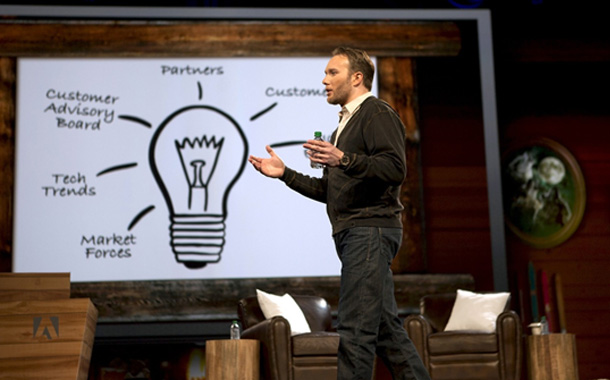Adobe Spotlights VR Advertising, In-Store Analytics and a More Personalized Alexa
At Adobe Summit, Adobe will reveal its latest innovations in areas including Artificial Intelligence (AI), Virtual Reality (VR) and the Internet of Things (IoT) during the annual “Summit Sneaks.” Hosted by Saturday Night Live’s Kate McKinnon, attendees will get a sneak peek at new technologies designed to dramatically improve customer experience. Fueling each of Summit Sneaks’ previews and demos is Adobe Sensei, which uses artificial intelligence and machine learning, as well as Adobe’s massive volume of content and data assets, to tackle today’s most complex experience challenges. Sneaks is a perennial highlight of Summit and audience favorites often become part of future product offerings.
Whether you’re a student, designer, enterprise or government agency, reimagining your customer experience has become a critical part of every digital transformation strategy. Technologies such as VR, AI, and IoT will provide new ways to design and deliver great digital experiences. All great experiences start with amazing design and deep intelligence, which have long been Adobe’s core competencies. Sneaks is the opportunity for Adobe’s top R&D talent to showcase work that pushes the boundaries in these domains.
Some of the projects Adobe will be showing off at “Summit Sneaks” include:
Virtual Reality and Augmented Reality
VR advertising: When done effectively, VR can be personalized and immersive while feeling natural. This project combines technology across Marketing Cloud and Creative Cloud to enable real-time advertising in a VR environment. Picture an individual wearing a VR headset, placed in the middle of New York’s Times Square. As she looks around, billboards are replaced in real-time. The deep learning capabilities powered by Adobe Sensei and the analytics and advertising capabilities in Adobe Experience Cloud identify what the customer would likely be interested in and pull the appropriate assets from within Creative Cloud.
Future of retail: The Microsoft HoloLens is driving the ability to compute in the physical world. The potential to visualize and layer data over objects—through voice commands and gestures—offers the ability for brands to see how consumers navigate physical spaces. This project illustrates the opportunities for retailers by showing how in-store shopper interactions can be captured and visualized within Adobe Analytics. For instance, by placing sensors on its items, a retailer can see that a product is generating heavy foot traffic and release more variations and promotions to serve customer demand.
Artificial Intelligence and Machine Learning
Intelligent website personalization: Personalized web experiences increase brand engagement and conversion. This project taps into Adobe Sensei’s AI technology to make intuitive recommendations about both layout and content. A travel website, for example, could input retirees as its target audience. Using Adobe Sensei’s capabilities, the site can mine the brand’s digital asset system in Adobe Experience Cloud to recommend the most effective layout and brand assets.
Geo-based audience targeting: This project will allow brands with a physical presence to tap into location technologies and engage consumers on the move with relevant content and promotions. Using a core service in Adobe Marketing Cloud, a fast food chain could identify groups of opted-in users that display purchase intent through engagement with the brand’s mobile app. Through patterns identified with Adobe Sensei’s machine learning, users are grouped by location and can be served up customized promotions that drive them to the restaurant.
The Internet of Things
Next generation voice assistant: Interactions with interfaces such as Amazon Alexa are currently transactional and anonymous, where users receive information on general topics such as movie show times or playlists. This project takes core Adobe Experience Cloud technologies and Amazon’s open APIs to create a more intelligent and personalized assistant. For example, consumers can ask Alexa for their reward status for a hotel chain or airline. Alexa can then use their customer profile data and preferences to recommend promotions or activities that take advantage of those reward points/miles in a transparent and privacy conscious manner.




